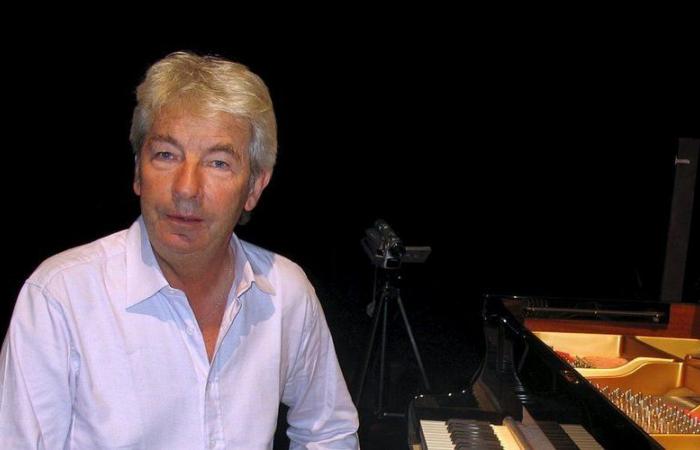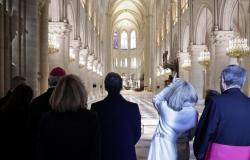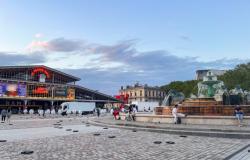
the essential
On November 8, the anniversary of the funeral of Gabriel Fauré, pianist Jean-Philippe Collard will be in Pamiers for a tribute concert in honor of the illustrious Appamean artist.
How did you meet Gabriel Fauré?
For me, it wasn’t very complicated, I was in a family of amateur musicians, I listened to music quite often. I still remember my paternal grandparents who, on Sunday afternoons, took out their instruments, cello, violin, piano and who played chamber music, quartets, quintets, while I played toy cars under the piano. I was fed this music. Afterwards, when it came to transforming myself into a pianist, it came quite naturally.
A first prize at the CNSMD in Paris with a Fauré program?
Yes, it caused a scandal at that time, it was an imposed piece, when like every year we expected a sonata by Beethoven, a great novel by Liszt, very difficult things to play. With this announcement of “Theme and variation” by Fauré, everyone looked at each other and said “no, that’s not possible”. I remember, one of the teachers said, “what a shame it’s much too easy”, he was wrong. To capture the atmosphere, the color, that’s the specificity of Fauré’s music. Obviously, technically, we find things more difficult, but what does technique have to do with it? Fauré was pure music, melody, lyricism, light. We didn’t learn all these things at the conservatory. It was a real turning point, not only for me but also at the Conservatoire, it was a way of saying that from now on, we had to reckon with this repertoire. It was very logical that the students of the Paris Conservatory worked on French music, that’s the least we could ask of them. At the time, we only played Chopin, Liszt and Beethoven. I didn’t play a note of Mozart at the Conservatory.
Afterwards, there was the Cziffra Grand Prix and the recording of “Treize Barcarolles”?
Yes, there too it contributed a lot to the rebirth of this repertoire. This record, contrary to what the record company expected, had an absolutely incredible success, for reasons that I still do not know, but proof that there was a small lack in the fundamentals of French music lovers that it needed to be filled. Since then, little by little, we have recorded and timidly put pieces by Fauré in recitals, even if it was very slow. Today, it’s hooked, the students are working and recording furiously, even if it’s not yet completely established at the concert. The framework of this music is not very easy to integrate into a recital. It is very difficult to pair it with another composer. Fauré is another area; you have to find its special place within the recital. But when you do it right, this music is wildly successful.
A Fauréan from the very beginning, are you personally involved in the promotion of French music?
For the advent of Fauré, I did my share of work, and I ensured that it still existed. I take very proactive action for French music. I created an academy at the Paris Normal School to attract young artists to the repertoire of this music which requires particular qualities, in articulation, in the definition of color… The young pianists come to work and then put their program of works of French music, we also see works by Gabriel Fauré imposed in international competitions. All this is a good part of the path to advancing the knowledge of this music.
How do we enter into the intimacy of composers?
First, you must have the desire to attack a score. Whether it’s classical music, romantic music or contemporary notebooks, the day you say to yourself “I’m going to put this on the program for a recital in a year or a year and a half”, you really have to be busy of desire to bring this to fruition with the concerts we have in progress. But when we begin a work we go inside and take it in as companionship. It’s a long process to bring it to the baptismal font. The intimacy between the composer, the work and the artist occurs naturally. Basically, you have to have a very strong desire to play this music.
Is Fauré representative of a certain French school of piano?
Yes and no, in fact he is very singular, he does not belong to a particular trace, he arrived there, he made his mark in several episodes as we know, he varied his writing process throughout. throughout his life. What does Fauré look like today, nothing at all. There are none of the composers who arrived after him who can claim to belong to his school. He is alone, he arrived alone and he left alone. This is a bit what made it difficult for him to join the global repertoire; he had no ancestry, he had no heir. Fauré is a free electron, he is not always easy to applaud.
Among the new products, there is also Granados with the Goyescas?
This also captivated me a lot. As I spoke of desire, that’s really it. It’s music that I had never approached, even if I knew the contours played by others, and suddenly I had a click and it suited me very well. I was very happy in the work and even in the execution, then the disc arrived which launched this work which I played a lot in concerts and recitals. Between the moment we play it for the first time and today, there is a whole transformation that takes place because it is a score that aims for extreme freedom, it can change color depending on the mood. of the day.
You have recorded all French composers, a large number of foreign ones, 60 albums later you have just re-recorded the thirteen Barcarolles?
Yes, I put them back in a new version for overall aesthetic reasons but also in relation to the arrival of Fauré in the pianistic repertoire. The Barcarolles have changed colors since my first recording. We no longer play them like they did 20 or 30 years ago. When I heard them one day in my car, I immediately wanted to re-record them, to take the text again, to do another reading with a little clearer sounds, more freedom in the score, a result more assertive in the Fauréan style. I too have changed, that’s what I wanted to prove. I also learned the lesson that the record is great but that only applies to the moment when we record it.
On the program for the Pamiers concert, you associate Fauré with Chopin, what connects the two pianists?
These are two composers that I have always wanted to associate, Fauré for a certain audience and Chopin for a broader audience. For Pamiers, I wanted to draw a parallel between the different titles of the works by juxtaposing Chopin’s nocturnes and Fauré’s nocturnes, Chopin’s barcarolles and Fauré’s Barcarolles to show a certain similarity in form. Where this finds meaning is in the lyrical aspect where we realize that both are held by a higher path which drives the score and the writing process. With Fauré, there are modulations and complications very quickly, while Chopin remains completely natural, but they have the common character of leading into the melody. They are always in song, in lyricism. There is always something that sings in a score by Fauré or Chopin. This really struck a chord with me because I love singing. It is also a way of presenting the work with contours that are easier to accept. By taking this trace, by highlighting the lyricism and the singing rather than going into intellectual considerations, it makes it easier to listen to. I prioritized this state and therefore associating it with Chopin seemed completely natural to me.





